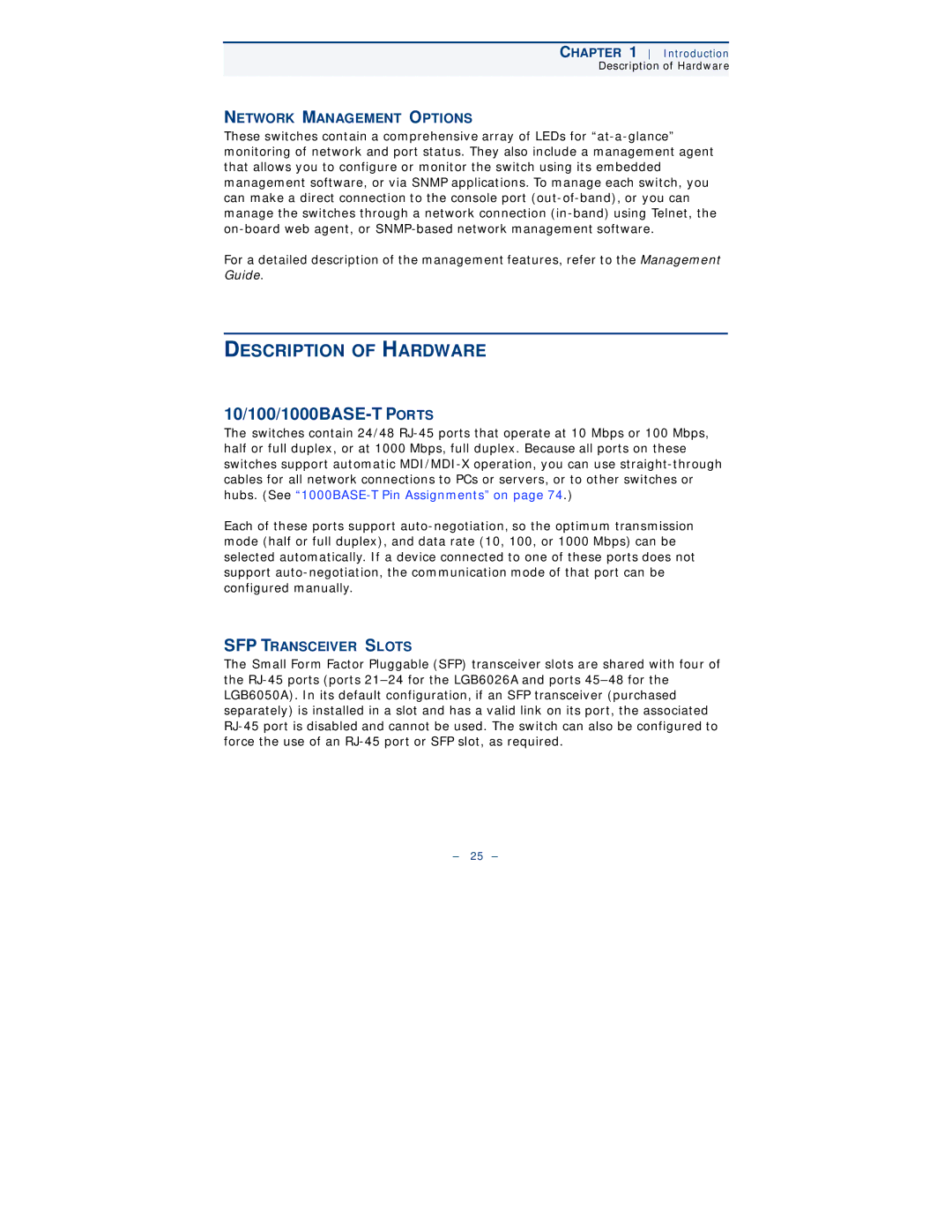CHAPTER 1 Introduction
Description of Hardware
NETWORK MANAGEMENT OPTIONS
These switches contain a comprehensive array of LEDs for “at-a-glance” monitoring of network and port status. They also include a management agent that allows you to configure or monitor the switch using its embedded management software, or via SNMP applications. To manage each switch, you can make a direct connection to the console port (out-of-band), or you can manage the switches through a network connection (in-band) using Telnet, the on-board web agent, or SNMP-based network management software.
For a detailed description of the management features, refer to the Management Guide.
DESCRIPTION OF HARDWARE
10/100/1000BASE-T PORTS
The switches contain 24/48 RJ-45 ports that operate at 10 Mbps or 100 Mbps, half or full duplex, or at 1000 Mbps, full duplex. Because all ports on these switches support automatic MDI/MDI-X operation, you can use straight-through cables for all network connections to PCs or servers, or to other switches or hubs. (See “1000BASE-T Pin Assignments” on page 74.)
Each of these ports support auto-negotiation, so the optimum transmission mode (half or full duplex), and data rate (10, 100, or 1000 Mbps) can be selected automatically. If a device connected to one of these ports does not support auto-negotiation, the communication mode of that port can be configured manually.
SFP TRANSCEIVER SLOTS
The Small Form Factor Pluggable (SFP) transceiver slots are shared with four of the RJ-45 ports (ports 21–24 for the LGB6026A and ports 45–48 for the LGB6050A). In its default configuration, if an SFP transceiver (purchased separately) is installed in a slot and has a valid link on its port, the associated RJ-45 port is disabled and cannot be used. The switch can also be configured to force the use of an RJ-45 port or SFP slot, as required.
– 25 –

